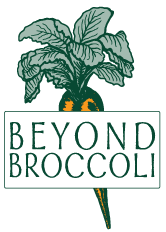I didn’t get enough sleep
I don’t have enough money
I need to exercise more
There is never enough time to get everything done
I’m not ___________ (thin, fit, attractive, rich, strong, smart, etc.) enough
Does your day start or end with any of these thoughts? What about throughout your day? Is there enough? Do you do enough? Are you enough?
Regardless of the abundance that surrounds us we often perceive a “culture of scarcity” – a mindset that can lead us to focus on what we lack versus what we have. A couple of years ago I was introduced to the work of Brene Brown, a psychology researcher who studies shame and vulnerability. Through her work she observes ways this “culture of scarcity” plays out in our everyday lives. The observation that struck me most is that people who struggle with emotional eating or binge eating, sometimes use food in response to these feelings of “not enough.” Brene suggests one possible antidote to subconscious and conscious feelings of scarcity and inadequacy: a gratitude practice.
“Piglet noticed that even though he had a Very Small Heart, it could hold a rather large amount of Gratitude.” ― A.A. Milne, Winnie-the-Pooh
While it may be naïve to think a simple gratitude practice is the solution to behaviors as complex as binge eating, I am intrigued by the idea that focusing attention on what we have versus what we lack can help us feel more fulfilled in our everyday lives. Many clients struggling with emotional eating issues describe food as a way to “fill” some type of void that has nothing to do with biological hunger. Despite their “knowing” this is a reason they eat, they struggle to stop such behaviors. I often encourage clients to identify what is driving the eating because if it is not physical hunger then no amount of food will “fill” them. The idea behind this strategy is that whatever the real need is that drives this eating cannot be met if it goes unidentified. Unfortunately the process of unraveling underlying needs is not simple and takes time.
Is it possible that focusing more on what we are grateful for may help us feel more “full” in a positive way? Can we “fill up” on gratitude to replace mindless activities that don’t serve us well?
I decided to try a gratitude practice myself, just to see what would happen. Though I don’t currently struggle with eating issues, I definitely fall into that scarcity mindset with respect to time, money, and many other things I wish I had more of. When I learned about the scientific studies related to gratitude I wondered if this practice could impact other behaviors that distract my daily life and keep me feeling “busy.”
related to gratitude I wondered if this practice could impact other behaviors that distract my daily life and keep me feeling “busy.”
Last fall shortly after my return to Jackson, I was sitting at my desk with Ginny curled up next to my chair. I glanced at my favorite wedding picture propped on my desk beyond my computer, and then out my front window toward Snow King Mountain bathed in afternoon sunlight. Overwhelmed with gratitude, I wanted to freeze that moment. I was home in Wyoming with Dave and Ginny, I re-launched my dream career at Beyond Broccoli, and I was surrounded by mountains, a community I care deeply about, and immediate access to so many of the things I love to do. I knew that at some point the proverbial “honeymoon phase” of this new chapter of my life would fade, so I decided to start a gratitude practice. My hope was that at some point when the mundane aspects of everyday life replaced my bursting enthusiasm for all-things-Jackson, I could retrieve a few of these strips of paper and remind myself of all the aspects of my daily life that provide richness beyond measure.
I already journal regularly so I chose to try a gratitude jar instead. I got a Mason jar from the kitchen and removed the steel lid. I cut a piece of paper into small strips and wrote a few of the things I was grateful for in that moment. I continued to do this daily for a while, savoring simple moments that made me feel joy and contentment. Dog walks and puppy kisses, random acts of kindness, playing in the snow, sunshine on cold winter days, feeling love and support. It didn’t take long to notice moments of gratitude everywhere I went. Now I don’t even have to read my little scraps of paper – I glance at the jar on my desk and am filled with gratitude.
I don’t know if this gratitude strategy can decrease general thoughts and feelings of scarcity for everyone. I do know this has been a powerful practice for me. I am more aware when I start down the scarcity mind set path and can stop myself or at least recognize what is happening. Though things are going pretty well right now, as with most years the past 12 months included moments of fear, pain, and discomfort, and there were losses. I can’t say I felt less of these uncomfortable emotions, but I do think I was a bit more resilient. The way I see it there is no downside to a gratitude practice and for me nurturing resilience following life’s inevitable hardships, is enough.
“To love someone fiercely, to believe in something with your whole heart, to celebrate a fleeting moment in time, to fully engage in a life that doesn’t come with guarantees – these are risks that involve vulnerability and often pain. But, I’m learning that recognizing and leaning into the discomfort of vulnerability teaches us how to live with joy, gratitude and grace.”
― Brené Brown, The Gifts of Imperfection: Let Go of Who You Think You’re Supposed to Be and Embrace Who You Are


